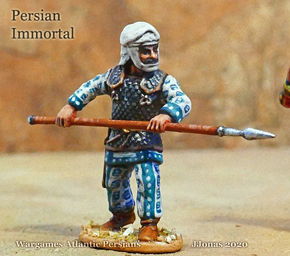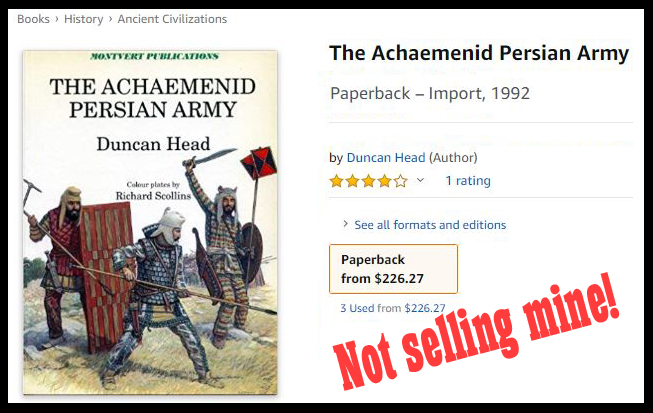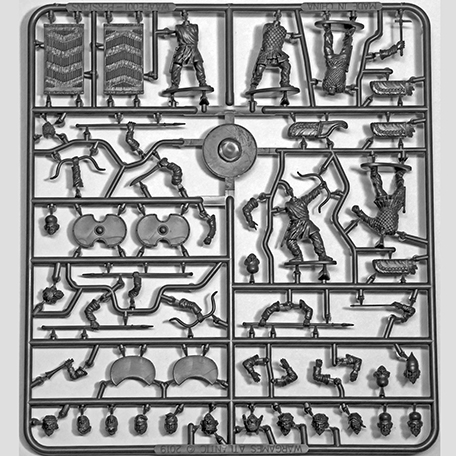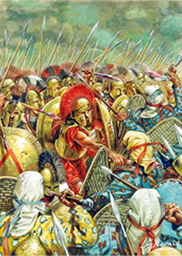

Wargames
Atlantic plastic 28mm Persian Multi-part set
|
|
The final charge at
Thermopylae
"Here
they defended themselves to the last, those who still had
swords using them, and the others resisting with their
hands and teeth." ~ Diodorus XI, 28-34 
|
|
|
The Sparabara,
archers and the gortyos
|
|
|
Close ups - The Medes and Cissians (Kissians)
The
Mede officer with the bulbous leather cap has his sagaris
(war hammer) out and is ready to charge. He wears padded
armor, and the violin shaped dipylon shield. His Median
style outfit includes the tunic and trousers that are more
practical on campaign than the flowing robes shown on the
Persepolis reliefs.
|
  
|
Close ups - The Persian Immortal, Sparabara and archers
The
Immortal is using his spear two handed underhanded to prod
while his spara shield is propped up by a stake. This is
taken directly from the Richard Scollins artwork (see
below). This torso has a heavier armor style that seems
appropriate for an Immortal. It is likely that Immortals
were equipped with spears and bows. I've tried to capture
the feeling of the Duncan Head Montvert art here, this
would make a great looking game unit if I am ever able to
collect enough of them.
|
 |
The Achaemenid
Army
by Duncan Head, art by Richard Scollins Ever since it came out in 1992, The Achaemenid Persian Army, by Duncan Head, illustrated by Richard Scollins, Christopher Rothero, and Niki Head, has been the premier go-to guide for anything Persian. The color plates by the late, very talented Scollins are reproduced on the web in abundance. The detailed line art and meticulous text that Duncan provides make this a one of a kind brilliant work for gamers and miniaturists alike. You can see why I used this as guidance for colors and style, since the Wargames Atlantic sculptor referenced them as well.
https://www.ancient.eu/article/149/herodotus-on-the-customs-of-the-persians/
|
 |
The Spara Wall
|
 |
The agony and the ecstasy of plastics
Now
after all this, I have a confession. I really don't like
plastic gaming figures. Too many bits to assemble. I realize
that is part of the joy is the multi part freedom. But I
don't like all the tiny bits, and the leftovers (including
the sprues*). Usually when I purchase plastic figures
they sit and languish. However, these Persians kind of roped
me in. I'm looking forward to assembling at least one unit
of these, maybe 24-32 figures, or more.
|
 |
How to start the project
This
reveals what the figures look like assembled and primed with
white spray primer.
You can see the abundance of detail that makes painting
these quite fun. Mold lines are slight and not in places
that mess up the details. They clean up nice and as I said
before the only modification was the tiara cap back flaps on
two of these, the archer has a back flap molded on. The
spears are finely detailed with their in scale pomegranate
end caps. However, like all plastic spears they are fragile.
For game purposes I will replace them with wire, but I will
lose some of their charm. OTOH a bunch of broken spears will
ruin everyone's game day. |


Where do you want to go next? Click on:
Back
to AncientBattles.com Index
02/11/2020